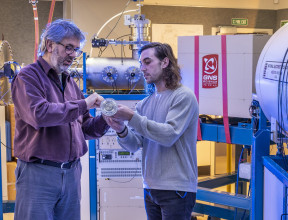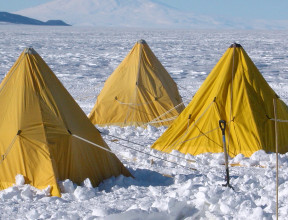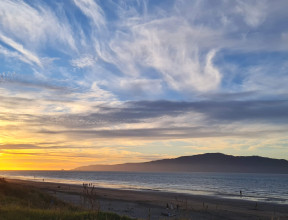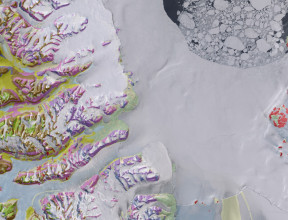
Sea ice
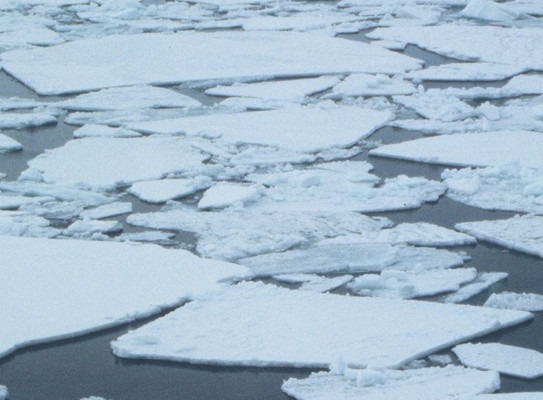
Sea ice is part of a complex, Earth-wide system that is critical to climate change. We need to learn more about sea ice processes to explain present-day trends and predict long-term changes in a world that is 2°C warmer.
Learning from the Ice
- Obtaining records from ice and marine sediment cores to reconstruct sea ice variability beyond the short observational record for the past hundreds to millions of years to put current trends into context and provide constraints for future projections.
- Investigating what causes year-on-year differences and long-term changes in the amount of Antarctic sea ice, how long it lasts, and its thickness.
- Investigating how changes in sea ice impact the stability of ice shelves, changes ocean heat content and currents, the natural carbon cycle, global heat distribution, and regional ecosystem health.
- Using satellites, airborne instruments and measurements taken on the ice and on the ocean to collect data, with state-of-the-art modelling to examine sea ice behaviour.
-
Understanding sea ice
There are three types of ice in Antarctica: Ice sheets, ice shelves and sea ice.
- Ice sheets are made from ice that precipitates instantaneously out of the extremely cold air. This is referred to as diamond dust due to its appearance as sparkles. This ice has built up over hundreds of thousands of years to form ice sheets. In some places in Antarctica, ice sheets are over 4,000m thick. Through gravitational flow, ice sheet ice slowly moves from the interior of Antarctica towards the ocean. As the ice sheet meets the ocean, it starts to float. At this point, it is called an ice shelf. The ice can still be over 1,000m thick.
- Sea ice, however, is very different. Sea ice develops each autumn as Antarctic temperatures plummet, causing the surface waters of the ocean to freeze. These surface waters are usually -2degC, but their high salt content means that the water remains liquid during summer.
There are two main types of sea ice.
- ‘normal’ sea ice: this is sea ice that develops every year and melts in summer. It usually is somewhere between 1-8m thick.
- ‘fast ice’: Fast ice survives the summer and can grow even thicker than ‘normal’ sea ice. Fast ice has built up in somewhat protected areas (coastal locations, behind grounded icebergs etc).
There is a particularly beautiful addition to the underbelly of sea ice in some areas – platelet ice. These feathery crystals form in the presence of supercooled water (colder than -2degC) underneath sea ice (where conditions are right) and also under ice shelves. Platelet ice can also build up to a few meters in thickness, and individual crystals can be 20-30cm large.
-
Importance of sea ice
Sea ice is a critical component of the earth’s climate system. Its variability also affects the global carbon and other biogeochemical cycles, and there are implications for much of the high latitude biomass.
This annual cycle of Antarctic sea ice is one of the largest seasonal signals on earth, roughly doubling the effective size of the Antarctic continent between February and September. In February, the average sea ice extent is 4Mkm2 – that’s four million square kilometres. In September, the average can reach 19M km2, or 19 million square kilometres.
Almost all the sea ice forms afresh every year, growing from the Antarctic coast out over the turbulent Southern Ocean. Yet the area of maximum extent is remarkably regular, varying by only a few percent each year. Even the shape of the outer edge of the sea ice field remains relatively constant, despite the variable and turbulent atmosphere above and ocean below.
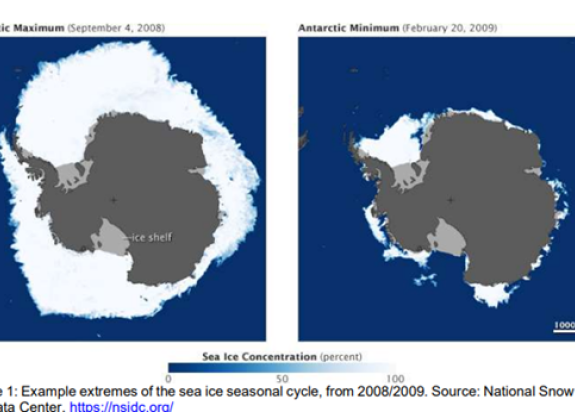
Puzzling trends
Every winter, ice grows 1,400 km out from the edge of the Ross Ice Shelf and over the Southern Ocean. Every summer it melts. Why? And what does that mean for our warming climate?
While Arctic sea ice has steadily and dramatically declined over recent decades, Antarctic sea ice expanded since satellite records began in 1979, a puzzling trend in a warming world. In 2016, that trend reversed – and we don’t know why.
To understand trends, we need to look at regions separately. Much of Antarctica’s winter sea ice area has been declining for some time. However, this decline was countered by a strong increase of sea ice that formed in the Ross Sea region. There, a freshening of the ocean caused by melting ice made it more susceptible to freezing. Strengthening winds from the interior of the Antarctic, partially driven by effects from the ozone hole, helped to push sea ice northwards and cool the exposed ocean underneath, creating more sea ice.
Understanding these behaviours is key to predicting the future of Antarctic sea ice and its role in the global climate system.
